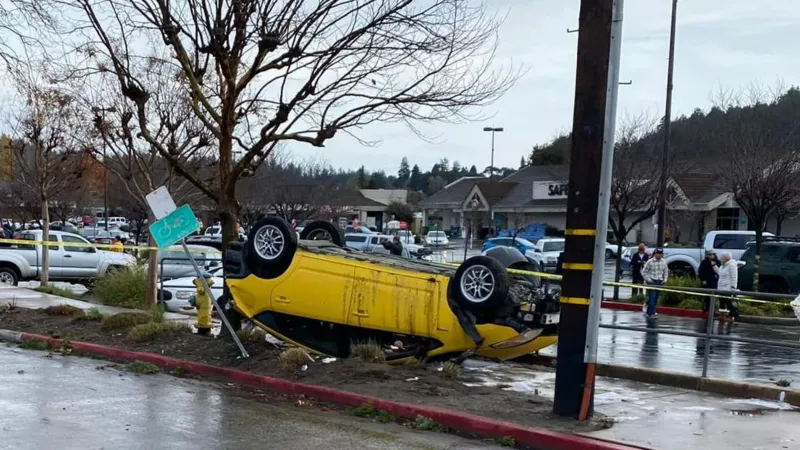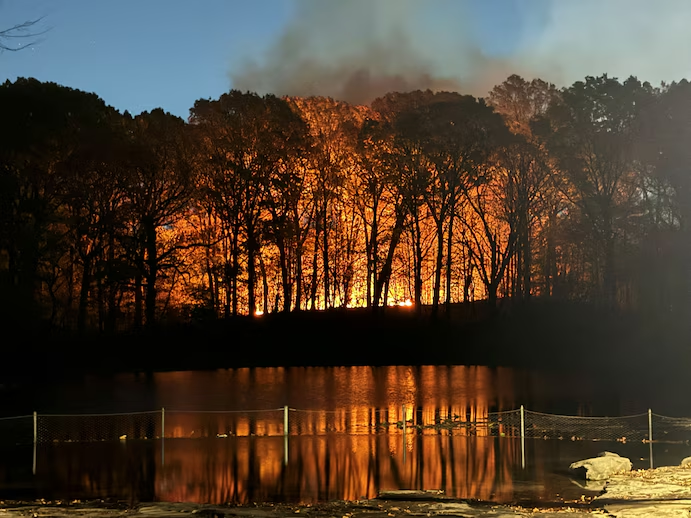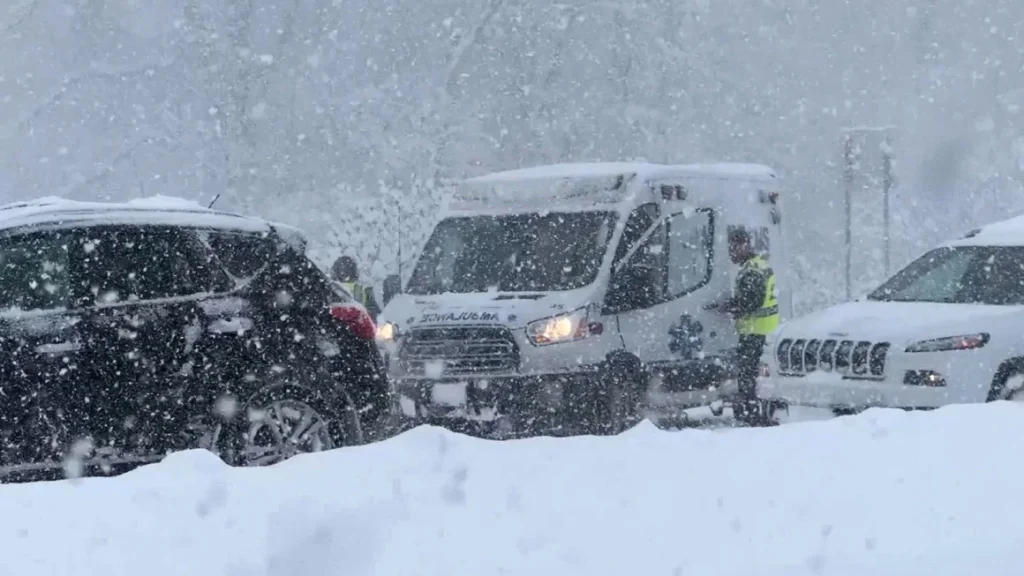Tornado hits northern California town

A powerful tornado struck a northern California town, leaving behind a trail of destruction and sparking widespread concern. The event, which occurred in the late afternoon, hit the town with little warning, catching many residents off guard. As authorities assess the damage, the tornado’s impact is becoming clearer, with reports of significant property damage, power outages, and injuries.
The tornado, which was an unusual occurrence for the region, swept through the area with fierce winds, reaching speeds of up to 130 miles per hour. Tornadoes are not common in California, particularly in its northern regions, which made this storm all the more alarming. While the state is no stranger to severe weather, including wildfires and earthquakes, tornadoes are relatively rare in comparison. This made the storm even more jarring for residents who are accustomed to different types of natural disasters.
The Impact of the Tornado
The tornado struck with little warning, leaving residents with barely enough time to seek shelter. Trees were uprooted, and homes, businesses, and vehicles suffered significant damage. Some buildings were partially or destroyed, with roofs torn off and windows shattered. Local authorities quickly mobilized emergency response teams to assess the damage and provide immediate relief.
Power outages affected thousands of residents as utility lines were torn down by the high winds. Emergency services worked around the clock to restore electricity, although many residents were left without power for several hours. In addition to the damage to infrastructure, the tornado also caused injuries. Several people were treated for minor to moderate injuries, although no fatalities were reported as of the latest updates. Local hospitals were on high alert, with staff working to treat those affected by the storm.
Authorities have confirmed that they are conducting damage assessments and working to clear debris from affected areas. Emergency shelters were set up for those displaced by the tornado, and relief efforts began almost immediately. Teams from various parts of the state and even neighboring regions were called in to help with the cleanup and provide support to those affected.
Unusual Weather Patterns
The tornado’s appearance in northern California is being described as an anomaly, with meteorologists noting that tornadoes are extremely rare in the state. While tornadoes do occur in other parts of the United States, particularly in “Tornado Alley,” the state’s geography and climate typically make it less susceptible to such events. Tornadoes in California usually happen in the central and southern parts of the state, but northern California is not known for producing this type of severe weather.
Experts suggest that a combination of atmospheric conditions contributed to the formation of this rare storm. Unseasonably warm air, high winds, and a series of weather systems coming together likely created the conditions necessary for the tornado to form. The storm also coincided with other severe weather events in the region, including heavy rains and strong winds, which caused flash flooding and other weather-related damage in surrounding areas.
Emergency Response and Recovery Efforts
In the aftermath of the tornado, emergency teams have been working tirelessly to assist those affected by the storm. Search and rescue teams have combed through the hardest-hit areas to ensure no one was trapped or severely injured. Additionally, utility crews have been working to restore power to homes and businesses that were affected by the downed power lines. The Federal Emergency Management Agency (FEMA) has been contacted to provide further assistance, and local officials are working to secure funding for long-term recovery efforts.
The cleanup process will likely take weeks, as crews work to clear debris, repair roads, and assess the full extent of the damage. While many homes have already been temporarily evacuated, efforts are underway to ensure that displaced families have access to temporary housing and other essential services.
Residents Respond to the Crisis
In the wake of the tornado, residents have shared their experiences, recounting the terror of seeing the storm approach and the damage it caused. Many people expressed shock at the intensity of the storm, noting that they had never expected such an event to occur in their town. However, the community has shown resilience, with neighbors helping one another to clear debris and offer support to those whose homes were damaged or destroyed.
Local businesses have also come together to provide aid to those affected. Restaurants have offered free meals to first responders and displaced residents, while others have organized fundraising efforts to assist in the recovery process. Many residents are banding together to clean up their neighborhoods, helping to restore a sense of normalcy in the aftermath of the devastating storm.
Looking Ahead: Preparedness and Climate Change
The rare tornado has raised questions about the increasing unpredictability of weather patterns and the need for better preparedness for extreme weather events. Some experts have suggested that climate change could be contributing to more frequent and intense weather anomalies, including tornadoes in regions where they are not typically seen. As such, the need for better disaster preparedness and response systems has become an urgent topic of conversation.
Local authorities are already looking at ways to improve the community’s resilience in the face of future extreme weather events. Enhanced weather monitoring, better public warning systems, and more robust emergency response plans are being discussed as part of the long-term strategy for dealing with natural disasters.
The tornado that recently hit northern California was a rare and unexpected event that has left a trail of destruction in its wake. While the damage is still being assessed, the prompt response from local authorities, emergency teams, and the community has helped mitigate the worst effects of the storm. As residents begin the process of rebuilding their homes and lives, questions about the future of weather patterns and climate change will continue to shape the conversation around preparedness and disaster management in the region. The tornado may have been an anomaly, but its impact serves as a reminder of the unpredictable nature of our environment and the need for resilience in the face of unexpected challenges.






